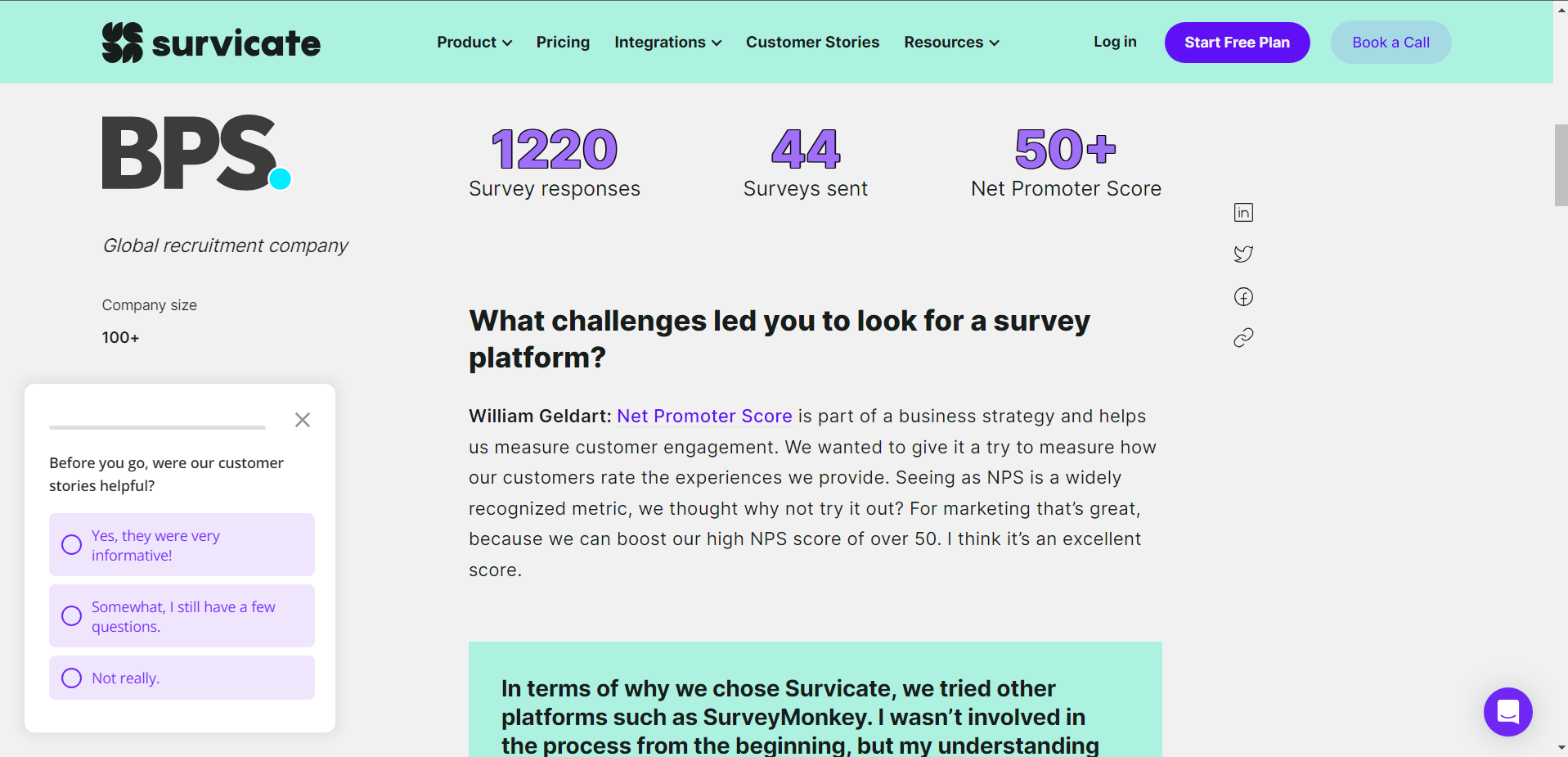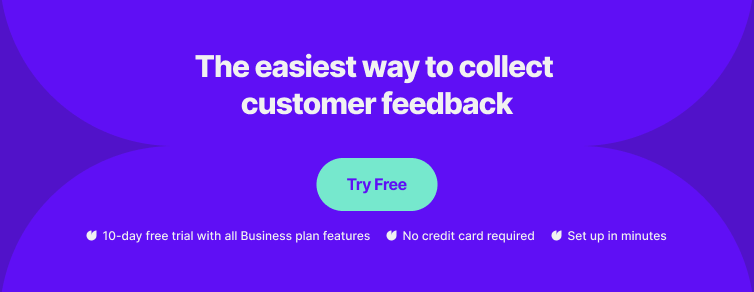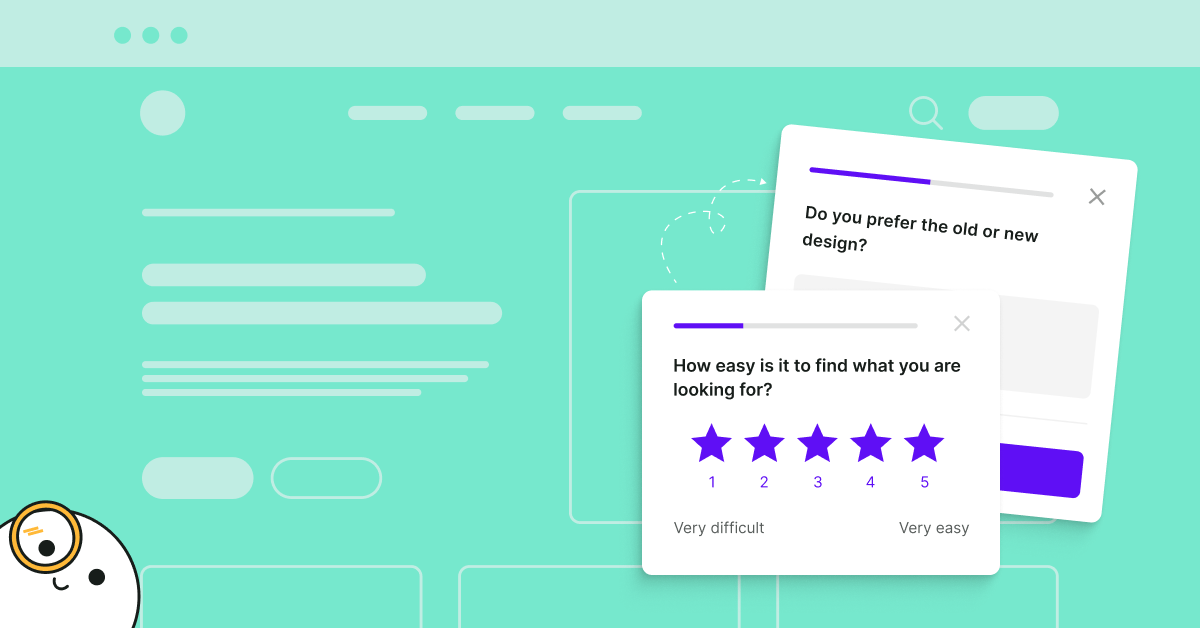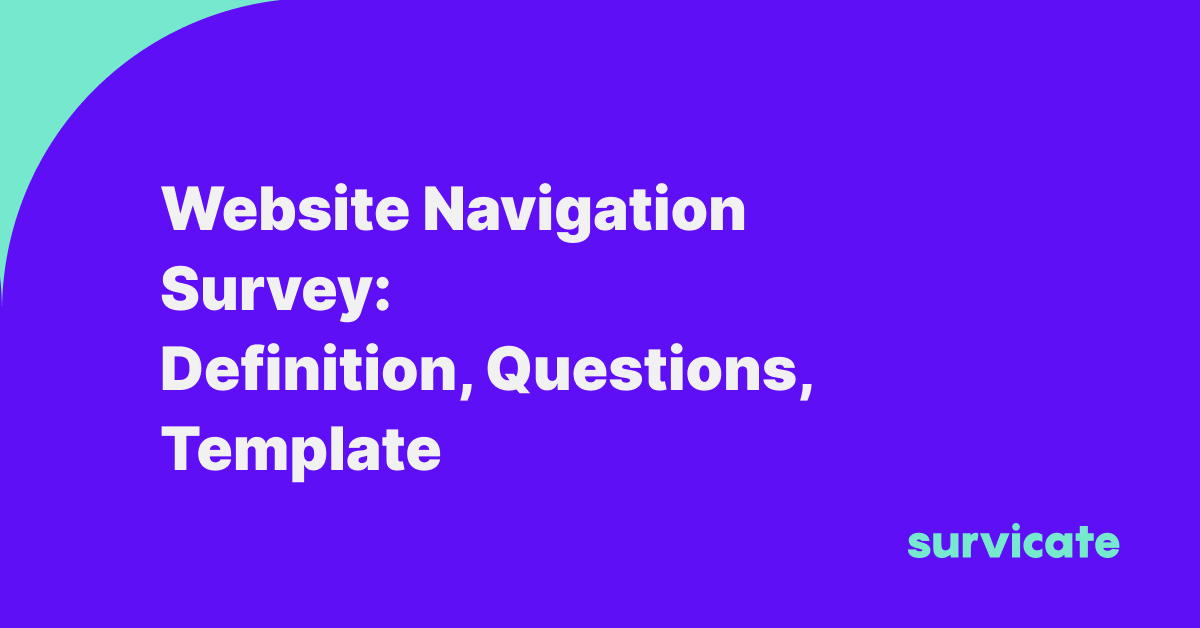You might not know what website intercept surveys are, but you must have seen one before.
Do you remember this disproportionate, obtrusive widget that blocked a page you'd just entered, asking you to fill out some form or a survey? That's exactly what website intercept surveys are. They intercept your experience.
Well, not all intercept surveys are alike. There is another, more subtle type of them: Do you recall seeing a small button in the corner of a site with "Feedback" or "Rate this website" copy written on it? After you click on it, a new window opens, and you see a set of questions you are asked to answer.
If you agree to participate in an intercept survey - either of them - you usually see a matrix with elements to rate. This could be: website navigation, overall experience, ease of use, etc. There usually is also a set of open-ended questions.
Intercept surveys tend to have many steps and require serious effort to answer. Completing them usually takes at least a few minutes. Potentially, they could be a good way of collecting in-depth customer feedback, but they have some significant disadvantages.
Some Good Reasons Why Intercept Surveys Are Bad
1. They disturb website visitors with new windows
Being very intrusive, intercept surveys have meager response rates. About 1% is a good result. Most often, it's 0,1-0,2%. They also require relatively a lot of effort and time to participate.
As a result, you need thousands of visitors a day to collect a substantial amount of feedback, or you will have to run a survey for a long time.
For these reasons, organizations running intercept surveys on their website sometimes offer incentives to take part in a survey. Otherwise, it's hard to get people to answer this many questions.
2. Providers of such software tend to prefer big customers and long-term commitments
You can't run, for example, a short website redesign survey on one recently redesigned page.
3. They might be unreliable
Participating in such surveys requires extra effort, so visitors' feedback tends to be rather extreme. (They either love or hate you. ) You lose everything in between.
4. Outdated form of collecting feedback
Nowadays, when UX designers and conversion rate optimizers do their best to remove all elements that distract visitors, using intercept surveys seems to be out of fashion.
Of course, using website intercept surveys is better than not collecting website feedback at all, but it's not the best choice. If you want to get serious about collecting feedback from your visitors, choose a better alternative to intercept surveys.
Better Alternative to Website Intercept Surveys
There's a much better alternative to intercept surveys. The alternative is website surveys. This one of the most effective methods of collecting customer feedback helps thousands of companies improve their customers' experience and boost business.
Here's what they look like:

As you see, they are discrete and elegant widgets that appear in the corner of the website. They are discrete, yet the way they slide in makes them hard to miss.
Website visitors see a full survey on a new screen without clicking extra on it. Everything happens in this one small box.
You can ask one or a few questions in a row. It's recommended to ask up 5 questions for the best response rates.
Also, all answers are recorded while respondents are typing them in. So, even if a person answers only 2 out of 4 questions, you still get answers to those 2 and you'll be able to analyze them.
On top of that, skip logic allows you to present different questions based on answers to previous ones.
Not convinced yet? There are more ways in which website surveys outperform intercept ones. Here are some of the most important of them.

1. Visitors can participate with minimal effort
Ask them just one or a few questions at a time. Answering takes a few seconds and doesn't require redundant clicks.
2. Targeting allows you to precisely choose who and when will see survey widgets
Adjust questions to the context and provide a high-quality website experience. This leads to high response rates. 3-5% is a typical result while top performing users achieve up to 58% response rate.
It's usually post-purchase surveys that report the highest response rates. Feel welcome to check this Post Purchase Survey Template by Survicate below:
3. The design of widgets can be highly customized to match your website
Make website surveys an integral part of your website. Some providers, including Survicate, allow you to add your CSS. This way, you can design the website survey widgets to be on-brand.
4. Can be used to run quick tests of new elements or changes on the website
Contrary to intercept surveys, many website survey tools offer flexible pricing without long-term commitments. Also, setting up a survey takes no more than a few minutes, which allows you to run a short test without ruining your company's budget.
Final Thoughts
As you see, website surveys will provide even more feedback than intercept surveys, and they offer a way better user experience.
Take a look at this guide to website surveys to learn more about how you can benefit from using such surveys on your website.
Or, simply sign up for Survicate's 10-day free trial and get access to all Business plan features today!

.webp)






.svg)
.svg)
.svg)

.svg)


.svg)







.svg)




.svg)

















.svg)






























.svg)

.svg)
.svg)

.svg)



.svg)






.jpg)
.svg)

.svg)







